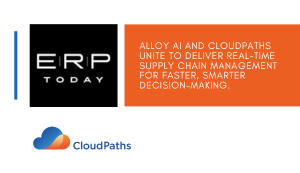Why businesses should be turning to automation to improve operations and streamline business processes
Due to the combination of inflationary pressures and the cost-of-living crisis, organizations need to be looking hard at how they can get into shape. And just like millions of people who take up new fitness routines in the New Year, businesses should look at the new financial year as a prompt to “get fit”.
As with humans, training is the answer for companies looking to get lean – but rather than hitting the gym, companies need to stress test their functions and processes, with the help of technology.
So, for businesses looking to get into shape, they need to start at the core. This forms the foundation of their operations. Then, they can identify and target weak spots, building a routine that optimizes operations throughout the businesses and builds long-term resilience to fight off future challenges.
A routine fit for business
The human body is a complex structure, with each one unique in its own way. Businesses, too, are complex in their own way, made up of a variety of processes, applications and systems. And like the human body, finding the right routine that works for it can be a method of trial and error.
‘Training’ a business relies on sharp shocks to the system that challenge how things are usually done
Similar to humans, ‘training’ a business relies on sharp shocks to the system that challenge how things are usually done and highlight areas for improvement. Once those areas are identified, businesses can hone in on them and, just like building a workout routine, create a strategy that will target where the work is needed.
However, like any good workout routine, the core forms a strong foundation to support overall fitness – from flexibility to stability. Before businesses can create a comprehensive strategy, or “workout” as it were, and begin addressing separate areas of the business, they need to understand and shape their core business principles that they can then build upon.
Focus on core strength
When it comes to businesses, many lack a strong data core. This ultimately has a domino effect on all other aspects of the business, causing them to be out of sync with one another. And with the economic crisis causing ongoing challenges, the unpredictability can easily throw a business off balance.
Improving decision making requires a holistic approach, where all operational data is taken into account before change is put in place. Implementing a data architecture with the right software solutions allows information across the business to be centralized and connected.
Where businesses previously might have had to manually transfer data and recreate all the business context lost from extracting and replicating data, a data architecture keeps this all intact. This provides a single source of truth, where businesses can access and manage data and react in real time.
With this complete unified view of their data, businesses have the ability to accelerate their decision-making with trust and confidence, knowing they always have the complete picture of their data regardless of where it is stored or how it was designed. And like strengthening the entire body, they can optimize the whole business.
Agile body, agile mind
With the ability to access insights in real time, businesses can “train” their mind, boost their flexibility and agility and improve their reaction time. With constantly evolving market circumstances, fit businesses require the ability to pivot quickly and seamlessly adapt their operations and business models. Having the right data will allow them to unify processes to deliver quick and accurate change.
Using this enhanced insight, businesses can de-silo disparate departments, and use that as a prompt to identify inefficiencies, target them and cut out bloated processes. In terms of functionality, businesses should be turning to automation to improve operations and streamline business processes to reduce repetitive manual work.
Ultimately, the knock-on effect of this tech innovation will be to create a more efficient workforce and processes that cut out unnecessary tasks, as well as reduce the time it takes to do activities – helping business leaders to have more visibility on problems and take powerful, effective action.
Supporting healthy business
While a new financial year acts as a prompt for businesses to “get fit”, there is no better time than now to get their operations in tune.
With high inflation and the cost-of-living crisis still very current, businesses need to put the processes in place to ensure they’re strong enough to weather ongoing challenges. Implementing a data core is the first step, bringing all operational data into one place. Then they can begin to identify weak spots and build a routine that eliminates inefficiencies and improves their agility. When this is in place, they can get into their best shape.




